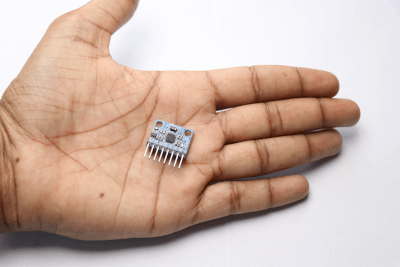What Is an Angular Velocity Sensor?

An angular velocity sensor, also known as a gyro sensor, measures the rotational motion or change in orientation of an object. It converts angular velocity changes into electrical signals, capturing this information rapidly and responsively.
These sensors are small and can be easily integrated into compact devices. However, they can be affected by external factors like vibration and shock, so precautions are necessary for precise measurement applications.
Applications of Angular Velocity Sensors
Angular velocity sensors are increasingly used in various devices due to their sensitivity and compact size:
1. Automobiles
In automotive stability control systems, these sensors detect vehicle slip angle and deflection, enhancing stability by adjusting wheel torque based on road and driving conditions. They also contribute to safety in driving support systems.
2. Smartphones and Tablets
These sensors in smartphones and tablets adjust screen orientation based on device tilt and rotation. They are also used in motion-sensor games and virtual reality applications.
3. Game Controllers
Game controllers employ these sensors to detect player movements and translate them into in-game actions for interactive gameplay.
4. Industrial Robots
In robotics, angular velocity sensors provide real-time feedback on the robot’s joint and component movement, enabling precise positioning and operation.
Principle of Angular Velocity Sensors
Angular velocity sensors come in different types, including rotary mechanical, optical, and capacitive:
1. Rotational-Mechanical Type
Utilizes the Coriolis force acting on a rotating object to detect angular velocity, measuring torque generated due to angular velocity application.
2. Optical Type
Operates based on the Sagnac effect, using the time difference of light rotation in a circular path to calculate angular velocity.
3. Capacitance Type
Measures angular velocity through changes in capacitance caused by the movement of electrodes, commonly used in aerospace and industrial applications.
How to Select an Angular Velocity Sensor
Consider the following when choosing an angular velocity sensor:
1. Dimensions
Select a sensor that fits the space requirements of your application, particularly important for portable or small devices.
2. Operating Voltage
Choose a sensor with an operating voltage that matches your power supply, especially important for battery-powered devices.
3. Measurement Range
Ensure the sensor’s measurement range aligns with your required angular velocity range. Precision may decrease with overly broad ranges.
4. Output Signal
Decide between analog and digital outputs based on your control unit’s interface, with analog providing continuous values and digital offering discrete data.
Other Information on Angular Velocity Sensors
Difference Between Angular Velocity Sensor and Acceleration Sensor
While both sensors detect motion in inertial space, angular velocity sensors measure rotation or directional change, whereas acceleration sensors detect speed changes. Combining both types enhances motion detection, but be mindful of increased space and cost with multiple sensors.